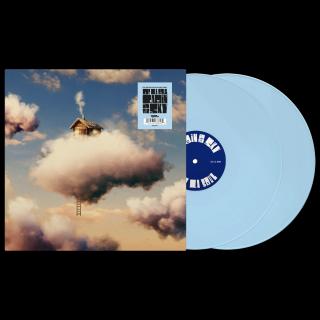Remember back in the day when you used to take photos with cameras? The ones with film in them? Remember how you usually put those pics in frames or a photo album? Maybe you didn’t get around to doing that and you just kept them in the envelope and threw them in a box. And sometimes you didn’t get around to that and you had them lying around on a table or counter. Now do you remember how saddened and frustrated you got when one of those loose photos had water spilled on it and the picture was ruined with washes and discoloration?
Artist Matthew Brandt goes toward those spills and damages amongst other photo destruction/creation processes in Columbus Museum of Art’s exhibition Sticky/Dusty/Wet.
The exhibition shows an assortment of works representing the variety of experimental photo processes used by Brandt. In Lakes and Reservoirs, Brandt traveled throughout the country taking photographs of lakes and reservoirs in nearly a dozen different states. He would develop the beautiful landscapes on large scale color photo paper and then submerge them in the lake water they capture. The photos were submerged for days, weeks, or even months. Once finally removed from the water a new landscape is revealed, distorted, speckled and stained.
As art schools and photo labs are getting rid of traditional photo processes to make way for digital printing, Brandt uses the now uncommon color developing process. Soaking the photos in the lake water deconstructs the process of color prints, and depending on time, water make-up and sediment, the image changes drastically. The lake water pushes the landscapes to become abstract and painterly. In water with larger amount of sediment, small splotches of bright yellows and orange dance across the image like fire. Some lake water damages the blues, reds or yellows. The prints are beautiful and destroyed. While mesmerized by the beauty these photos have I was also led to wonder about the acidic and pollution levels found in America’s lakes.
Brandt incorporates materials of his subject matters often. In the Dust Building series he visited Los Angeles area libraries to gather images of buildings that were bulldozed to make room for new construction. He then went to the site to collect the dirt and dust. Through an almost alchemical process he uses the dirt as the pigment to print the images of the fallen building.
In his Taste Test in Color series he gives a respectful nod to Ansell Adams’s iconic Yosemite photographs, and pushes the boundaries of what can be used for pigment in a photograph. CMA displays three of his works from this series. Each are the same photograph of Vernal Falls in Yosemite, printed with various edible ingredients in a CMYK or RGB color model. He uses Kool-Aid, bubble gum, and gummy bears as his pigments and pulls them through the silkscreen to print the image. Each material responds differently to the silk screen process creating a variety of streaks, marks and texture. The images are colorful, fun and playful, but again it leads me to think about how strong the chemicals found in these foods can be. It also raises the contrast of stunningly beautiful natural landscapes during Adam’s time being corrupted by the superficiality of modern consumption.
The Honey Bee series was made when America was realizing the increasing deaths of the honey bee population and colony collapse. Here almost as an homage, he uses dead honey bees to create the pigment to print images of the bees.
I was lucky to attend the museum’s Brown Bag lecture series where Brandt cheerfully explained his processes, curiosities and other quite amazing works. He was funny, friendly and oozing with positive energy. His photo are portraits that sweetly acknowledge the beauty in people, communities and nature, but his practice of using the materials from his portraits, and the subversion of the traditional photo processes, leave room for a more complete truth in the subject matter and somehow less of the artists manipulation.





